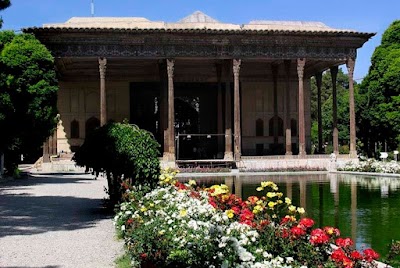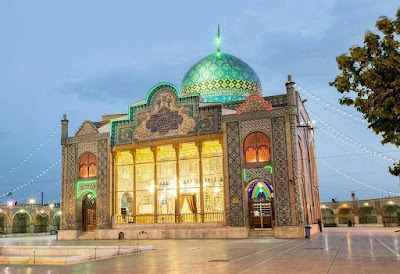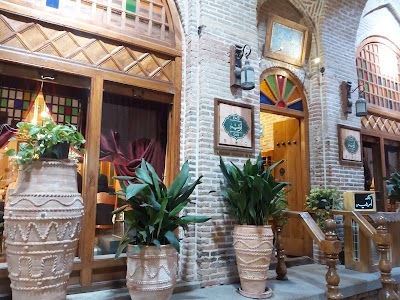Chehel Sotoun Palace (کاخ چهلستون قزوین)
Overview
Overview of Chehel Sotoun Palace
Chehel Sotoun Palace, known in Persian as "کاخ چهلستون قزوین", is a captivating historical landmark located in the city of Qazvin, Iran. This exquisite palace, whose name translates to "Palace of Forty Columns," is a stunning representation of Persian architecture and artistry from the Safavid era, dating back to the 17th century. It was originally built as a royal summer pavilion and a place for entertainment, showcasing the grandeur of the Safavid dynasty.
The palace is surrounded by lush gardens, creating a tranquil oasis that invites visitors to explore its beauty. As you walk through the gardens, you are greeted by the sight of the palace's impressive wooden columns, which reflect in the tranquil waters of the adjacent pool. The name “Chehel Sotoun” actually refers to the optical illusion whereby the reflection of the palace's twenty columns in the water makes it appear as if there are forty.
Architectural Marvels
Upon entering Chehel Sotoun Palace, you will be struck by the intricate tile work, stunning frescoes, and delicate stucco decorations that adorn the walls. The interior is filled with beautifully painted ceilings that depict scenes of nature, hunting, and historical events, all of which provide insight into the cultural and historical context of the time. The grand hall, known as the "Hall of Mirrors," is especially breathtaking, where the interplay of light and reflection creates an enchanting atmosphere.
The palace also features several smaller rooms that served different purposes, including guest accommodations and areas for royal meetings. Each room is a testament to the exquisite craftsmanship of the era, with furniture and decorative elements that have been carefully preserved. The blending of Persian and European influences in the design is particularly noteworthy, making Chehel Sotoun a unique representation of the cultural exchanges that occurred during the Safavid period.
Historical Significance
Chehel Sotoun Palace is not only an architectural gem; it also holds significant historical importance. It was a place where important political and cultural events took place, serving as a venue for royal ceremonies and gatherings. The palace has witnessed the ebb and flow of history, including the rise and fall of dynasties, and remains a testament to the rich heritage of Iran.
In 2010, the palace was designated a UNESCO World Heritage Site as part of the "Persian Gardens" designation, highlighting its importance in the context of Persian garden design and landscape architecture. This recognition has drawn attention from around the world, making it a must-visit destination for travelers interested in history, culture, and architecture.
Visiting Chehel Sotoun Palace
When planning your visit to Chehel Sotoun Palace, you will find it conveniently located in Qazvin, which is easily accessible from Tehran, making it an excellent day trip. The palace is open to the public, and guided tours are available to enhance your understanding of its history and significance. Be sure to take your time exploring the gardens and soaking in the serene atmosphere, as well as capturing the stunning reflections of the palace in the water.
As you wander through the majestic halls and gardens, you'll gain a deeper appreciation for the artistry and dedication that went into creating this remarkable site. Chehel Sotoun Palace is a place where history comes alive, offering an unforgettable glimpse into Iran's rich cultural tapestry. Whether you're a history buff, an architecture enthusiast, or simply a curious traveler, this palace promises an enriching experience that you will cherish long after your visit.






